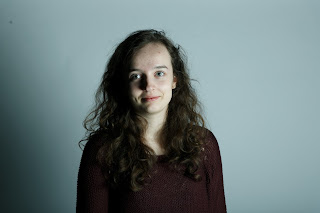when she did her degree she didn't have any idea what she wanted to do and it was the same when she started assisting... 5 years later she specialised and got an agent, she then started shooting kids.
This was because when she was doing a shoot focusing on the nude form, a mother with a new born baby came to her, she was taking pictures of this baby and showing them to people and she said it was the first time she felt she could really talk about her work.
The thing she had been searching for the "oh my god I'm doing the right thing" feeling was there. it happened eventually. The decision to shoot kids as a living was a financial one.
one piece of advise she gave us that she wished she had done when she was at university was to tick the boxes and listen to the lecturers they are there to help and play by there rules.
You can do lots of things from your photographic degree:
STUDIO ASSISTANT
LIGHTING ASSISTANT
DIGITAL OPERATOR
IN HOUSE RETOUCHER
FREELANCE RETOUCHER
SOCIAL/WEDDING PHOTOGRAPHER
STUDIO/ IN HOUSE PHOTOGRAPHER
COMMERCIAL PHOTOGRAPHER
COMMERCIAL PHOTOGRAPHER
REPORTAGE PHOTOGRAPHER
CRUISE SHIP PHOTOGRAPHER
UNIVERSITY TECHNICIAN
PHOTOGRAPHY TEACHER
PHOTOGRAPHY LECTURER
ETC
LIGHTING ASSISTANT
DIGITAL OPERATOR
IN HOUSE RETOUCHER
FREELANCE RETOUCHER
SOCIAL/WEDDING PHOTOGRAPHER
STUDIO/ IN HOUSE PHOTOGRAPHER
COMMERCIAL PHOTOGRAPHER
COMMERCIAL PHOTOGRAPHER
REPORTAGE PHOTOGRAPHER
CRUISE SHIP PHOTOGRAPHER
UNIVERSITY TECHNICIAN
PHOTOGRAPHY TEACHER
PHOTOGRAPHY LECTURER
ETC
She talked about Income and how much she had earned each year:
she explained how she got to where she is. She told us to take the first step, talk to or email someone and the ball will start rolling, she wish she hadn't of done the things she had before going into photography, she was stuck in a little town and stuck in the call centre, she wis she had worked for free with internships and lived in London, being a photo assistant in a studio didn't bring her the contacts she needed and wanted.
She got two jobs assisting two different photographers and then once she got those two names under her belt she started to get more and more assisting jobs.
she thinks its a lot easier to use children as a story telling tool, and it is very hard to get that chaos from adults that you can from kids.
By far Emma Tunbridge has been my favourite guest lecture we have had, because she is an actual photographer who is taking photos in an area that i want to progress into. I found her talk interesting and engaging and she actually talked about the kinds of things we needed to know, giving us an idea of wages and the kinds of jobs you can get once you have your degree.
























